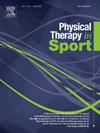Optimising physiotherapist delivery fidelity of exercise and physical activity advice for achilles tendinopathy: A prospective repeated-measures observational study
IF 2.2
3区 医学
Q1 REHABILITATION
引用次数: 0
Abstract
Objectives
To assess physiotherapist delivery fidelity and identify factors optimising delivery fidelity of an intervention based on recommended guidelines for Achilles tendinopathy.
Design
A prospective repeated-measures observational study of physiotherapist delivery fidelity with carefully defined exercise and physical activity advice.
Setting
An inter-disciplinary clinic in Melbourne, Australia, embedded in a randomised controlled trial.
Participants
Two physiotherapists delivering the intervention to five participants each, at three timepoints.
Intervention
All participants were expected to receive the same intervention. Feedback at timepoint one, guided boost-training to optimise delivery fidelity.
Main outcome measures
Proportion of exercise and physical activity advice components delivered as intended (high ≥80%; moderate 51–79%; low≤50%), with relationships between variables analysed using chi-square tests.
Results
Physiotherapist delivery fidelity improved significantly between timepoint one and two (χ2 = 83.3, p < 0.001), then sustained at timepoint three. At timepoint one, seven (70%) of intervention components were delivered with high fidelity, one (10%) with moderate fidelity and two (20%) with low fidelity. At timepoint two, after boost-training, nine (90%) were delivered with high fidelity and one (10%) with moderate fidelity. At timepoint three, all intervention components (100%) were delivered with high fidelity by both physiotherapists.
Conclusion
Physiotherapist delivery fidelity can be optimised with feedback, collaboration and boost-training.
优化理疗师对跟腱病的运动和体育锻炼建议的忠实度:前瞻性重复测量观察研究。
目的评估物理治疗师实施干预的忠实度,并确定根据跟腱病建议指南优化干预忠实度的因素:前瞻性重复测量观察研究:物理治疗师对精心定义的运动和体育锻炼建议的忠实性:环境:澳大利亚墨尔本的一家跨学科诊所,包含在随机对照试验中:两名物理治疗师在三个时间点分别对五名参与者进行干预:所有参与者都将接受相同的干预。在第一个时间点进行反馈,指导强化训练,以优化干预效果:主要结果测量:按预期提供运动和体育锻炼建议的比例(高≥80%;中等51-79%;低≤50%),变量之间的关系采用卡方检验进行分析:结果:在时间点一和时间点二之间,物理治疗师授课的忠实度有了显著提高(χ2 = 83.3,P 结论:物理治疗师授课的忠实度在时间点一和时间点二之间有了显著提高(χ2 = 83.3,P通过反馈、合作和强化训练,可以优化物理治疗师的治疗效果。
本文章由计算机程序翻译,如有差异,请以英文原文为准。
求助全文
约1分钟内获得全文
求助全文
来源期刊

Physical Therapy in Sport
医学-康复医学
CiteScore
4.50
自引率
8.30%
发文量
125
审稿时长
39 days
期刊介绍:
Physical Therapy in Sport is an international peer-reviewed journal that provides a forum for the publication of research and clinical practice material relevant to the healthcare professions involved in sports and exercise medicine, and rehabilitation. The journal publishes material that is indispensable for day-to-day practice and continuing professional development. Physical Therapy in Sport covers topics dealing with the diagnosis, treatment, and prevention of injuries, as well as more general areas of sports and exercise medicine and related sports science.
The journal publishes original research, case studies, reviews, masterclasses, papers on clinical approaches, and book reviews, as well as occasional reports from conferences. Papers are double-blind peer-reviewed by our international advisory board and other international experts, and submissions from a broad range of disciplines are actively encouraged.
 求助内容:
求助内容: 应助结果提醒方式:
应助结果提醒方式:


